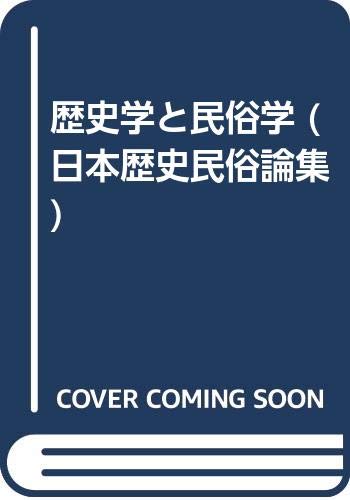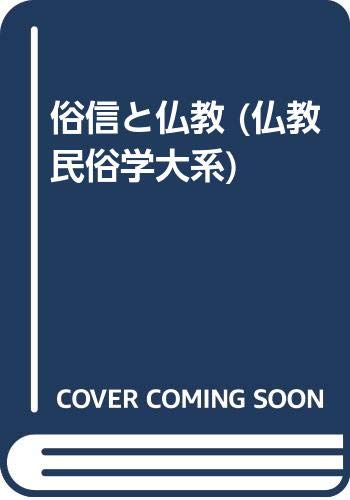8 0 0 0 歴史学と民俗学
- 著者
- 網野善彦 宮田登 福田アジオ編
- 出版者
- 吉川弘文館
- 巻号頁・発行日
- 1992
3 0 0 0 OA 「世直し」とミロク信仰 : 日本における「世直し」の民俗的意味
- 著者
- 宮田 登
- 出版者
- 日本文化人類学会
- 雑誌
- 民族學研究 (ISSN:24240508)
- 巻号頁・発行日
- vol.33, no.1, pp.32-44, 1968-06-30 (Released:2018-03-27)
The purpose of this article is to analyse several types of renewal concepts of the Japanese folk. (1) In the harvest festivals on Yaeyama island, Okinawa, we can discern orgy elements. At these festivals which may be called rituals for yearly renewal, people enthusiastically enter into fertility dances for the coming new year, expressed as "the year of the Miroku", that is, the year in which the utopian world begins with the appearance of the Miroku (a visiting deity). We can find the same elements in the scenes of "the Okageodori" and "Eejanaika" which were recorded in documents of the Edo period. This is one type of renewal concept which was based on agrarian rites. (2) The rites which ward off the world full of evil spirits and welcome the new world, are found in the practices of "Torikoshisyogatsu" in various parts of Japan. These practices have functional force in facilitating the coming of the new year by repeating the new year festivals within the course of the year. In the middle of the Edo period there occurred several Miroku years and in the turbulent Middle Ages "the year of the Miroku" occurred quite frequently, especially in the Kanto district. In this district people warded off evil spirits at the Kashima shrine (Ibaragi prefecture), and hoped or believed that the fertile world of Mioku came from Kashima. In the Kashimaodori and Mirokuodori dances which are still held as divine services, these ideas are expressed ritually. This is another type of renewal concept, by which evil spirits are warded off and the world is purified and cleansed. (3) In Japan renewal through fanatic eschatological concepts did not exist. But the lower classes thought that earthquakes or floods signified renewal because in such disasters people could expect assistance from the authorities People thought that the causes of earthquakes were as follows: the occasion on which the Kashima deity ordinarily presses down upon the sheatfish with a secret stone (Kanameishi), thus causing the earthquake (i. e, reform), sometimes, however, the sheatfish appears as a servant of the gods who revolts against the god of Kashima, changing the earth's axis and bringing catastrophe upon the world.
2 0 0 0 OA 「老人と子供」について
- 著者
- 宮田 登
- 出版者
- 日本文化人類学会
- 雑誌
- 民族學研究 (ISSN:24240508)
- 巻号頁・発行日
- vol.46, no.4, pp.426-429, 1982-03-31 (Released:2018-03-27)
1 0 0 0 ミロク信仰の研究 : 日本における伝統的メシア観
1 0 0 0 「老人と子供」について
- 著者
- 宮田 登
- 出版者
- 日本文化人類学会
- 雑誌
- 民族學研究 (ISSN:00215023)
- 巻号頁・発行日
- vol.46, no.4, pp.426-429, 1982
1 0 0 0 変容する都市祭礼の文化財的側面に関する総合的研究
本年度は3年計画の最終年度にあたり、昨年度実施した20道県の山車祭りを中心とする都市祭礼の実態調査の報告をデータベース化した。報告はA4サイズの用紙で2000枚を越える膨大な量に及びこれらを整理し、各研究分担者ならびに一般の研究者が共有化できるようにデータベース化し、これを報告書に収録した。あわせて分担者による共同実地調査を富山県城端町で実施するとともに、各分担者が秋田県、宮城県、福島県、茨城県、千葉県等で現地調査を実施した。平成11年5月には、共同調査を行った富山県城端町であわせて分担者会議、協力者会議を開き今年度の研究計画の方針、報告書のとりまとめについて検討した。また、前年度の実態調査報告書は副本を2部作成し、研究代表者の宮田と、文化庁、植木の3者に分けて保管し、利用の便をはかることとした。各分担者は、各研究協力者から提出された報告をもとに遂次現地調査実施し、都市祭礼の態様、山車等の実体についてデータの蓄積をすすめ、あわせて協力者に各地の事例についてまとめてもらい、分担者のまとめとあわせて後日印刷公開する予定である。本研究の成果としては、最終的にデータベースをCD-Rの形で作成し、各分担者、協力者等に配布した。また、最終年度にあたり、報告書を作成した。


